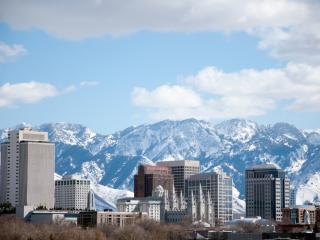
Visit Salt Lake Finds New Ways to Measure Events Success
Measuring the Economic Impact of Events
Mark White, Senior Vice President of Sales & Services for Visit Salt Lake, delves into the new way his organization is measuring the economic impact of events, and how that benefits planners, the destination and local stakeholders. Local knowledge and relationships are a huge, untapped resource that CVBs offer. But beyond making planners’ jobs easier, Visit Salt Lake consistently seeks ways to improve and keep up with changes in the travel space.
Leveraging connections to enhance visitors’ stays
CVBs know their destination inside and out, and they have built relationships in their community that can be beneficial for planners. White says many planners “just don’t know that we’re here and they spend all kinds of time, money and effort doing the things that we can easily help with, probably much more efficiently and for free.” For example, Visit Salt Lake can easily reach out to the local police force to close off streets and reroute traffic for events that need crowd management, freeing up a planner’s time to work on other components.
Visit Salt Lake also tries to match clients to events and festivals. “If we can explore some dates where the demographic of the meeting aligns with a major event or festival, it provides a better experience for attendees to explore on their open night.” The CVB takes into account hotel rates, planning around events that typically draw locals, which is when hotels have lower occupancy and likely better rates. This local knowledge is invaluable to a planner, raising the value of the event and saving money. And CVBs are eager to help. They have the resources and insider knowledge specifically for these situations, and can direct planners to the right people.
Using research to benefit planners and stakeholders
Visit Salt Lake went a step beyond leveraging relationships and spearheaded research efforts with the University of Utah to discover how to nurture the beneficial relationship between planners and local stakeholders. White says his team noticed a years-long trend of diminishing hotel bookings. Planners don’t want to book large blocks of hotel rooms because many go unused. Consumers expect choices, whether that’s a boutique hotel, an Airbnb, or a local bed and breakfast.
Fighting the trend was frustrating for both planners and local stakeholders, so Visit Salt Lake embraced the change and pushed for an entirely new mindset regarding the value of a group. “I don’t think CVBs were accurately assessing the value of a piece of business. A 10,000-person group might only use 2,000 rooms, but their economic impact across the community may be better than a 5,000-person group who reserved 4,000-room nights.” In other words, Visit Salt Lake wanted to embrace its root mission of enhancing the economy, not counting hotel occupancy rates.
To do that, it partnered with the University of Utah’s Bureau of Business and Economic Research to comb through 20 years of visitor and events data. Some incredibly consistent patterns emerged, enabling Visit Salt Lake to identify those groups that are a great fit for Salt Lake and to have better discussions with hotel partners. The data has so changed Visit Salt Lake’s approach that they now produce a robust economic impact report to give to planners. The report helps planners understand the value of their meeting, further promoting a symbiotic relationship between the destination and the events that choose them. The end result is Visit Salt Lake and local stakeholders are better able to predict and cater to planners’ needs.
Visit Salt Lake demonstrates how working together toward a unified goal, using community relationships and insider knowledge, benefits both planners and local stakeholders. It is also a successful example of how CVBs are changing within the travel space, seeking innovative new ways to create an invaluable experience for both planners and their attendees alike.
Plan your next meeting in Salt Lake. Learn more here.
